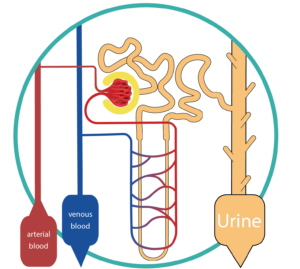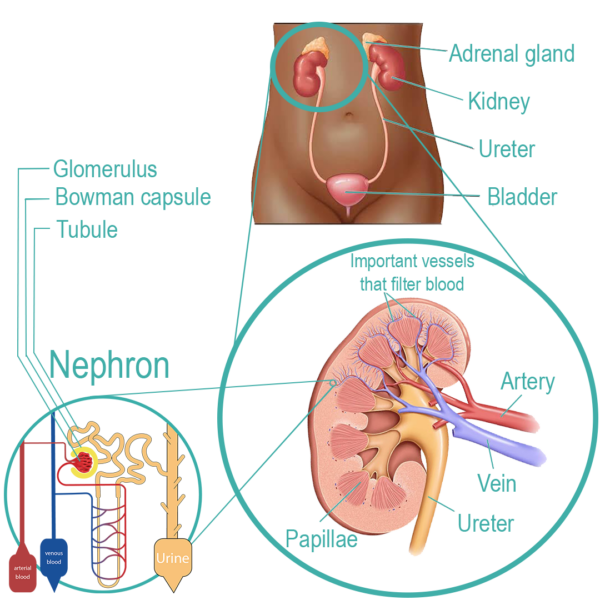Acute kidney disease is kidney damage or loss of kidney function. These are reversible if they occur within a short period of time, which is why they are also called “acute”.
These include, for example, toxic poisoning, shocks to the upper abdominal area and other types of accidents. These then cause a state of shock, sometimes for a short time, from which the kidneys can recover.
In the case of so-called chronic kidney disease, people do not initially notice the disease when the disease begins.
What is also known as “chronic kidney failure” can be caused by very different causes.
These include, among others:
Since the kidneys slowly stop functioning, the disease only becomes noticeable through the symptoms of nephrotic syndrome.
Genetic kidney diseases are congenital kidney diseases.
Depending on the clinical picture, these become noticeable very early in infancy or late in adulthood.
These include:
In the final stage, chronic kidney insufficiency and genetic kidney diseases lead to irretrievable loss of function of both kidneys and thus to dependence on dialysis if a kidney transplant is not attempted beforehand.




